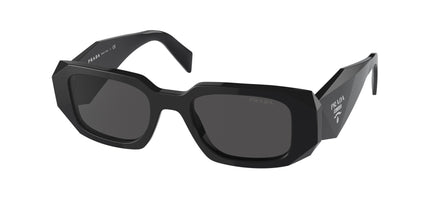Best Tips to Optimize Office Space for Eyes

It’s common for employees in the office to spend half of their working hours in front of a computer screen. Sometimes, this routine follows back home - meaning more time in front of the screen.
The bright screen and glare result in neck pain, eye strain, sore muscles, and headaches. If you face all these problems, glasses alone won’t help your case. You will need a good diet and an ergonomic workspace to avoid serious eye concerns.
This blog post will explain some of the best tips to make your workspace optimal for your eyes.
Eyes Problems That Heavy Computer Usage Can Cause
Computer screens emit rays that can seriously damage your eyes and vision. This can happen due to several reasons, including:
- Small font size
- Excessive exposure to computer screen
- Background light way brighter than the computer screen
- Looking at unclear text or flickering images
- Working in a stressful environment or nonstop
- Not enough distance between the screen and the employee
The temporary or long-term vision problems these factors can cause include:
- Blurred vision
- Dry eyes syndrome
- Eye fatigue or strain
- Tired eyes with irritation
- Watery or itchy eyes
- Nonocular symptoms
- Can’t distinguish between colors
- And more!
Tips To Make Workspace Ergonomically Healthy For Eyes
1. Fix the Lighting
Eye strain commonly happens when the brightness of the background or your surroundings is less than that of your computer screen. Ensure that your workspace has proper lighting installed to match the brightness of your screen.
2. Eliminate the Blue Light
If your eyes feel tired when looking at the computer screen for hours. Typically, this happens because of the blue light that’s emitted from the screens. Blue light can cause some severe troubles in your daily routine, including tired eyes, restless sleep, irritation, eye redness, and more. You can eliminate this blue light problem by getting blue light glasses or adding a blue light filter to your screen.
3. Try the 20-20-20 Rule
The 20-20-20 rule is common among workers. This rule allows you to focus on the screen for twenty minutes, then look at an object that’s twenty inches away for at least twenty seconds. It is one of the best rules to give your eyes the rest they need from digital strain. When working, add alarms to your mobile device every twenty minutes to remind you to take this necessary eye rest.
4. Positioning the Computer Screen at the Right Distance and Angle
Glasses do help most of the time. But if you stay hunched over the laptop or computer screen, lenses or glasses won’t be effective. Your vision will deteriorate further. So, positioning your monitor at the right angle and length away from you is vital for vision ergonomics.
Remember to place your monitor or laptop at least twenty to twenty-five inches away from your face. Also, keep the center of the screen fifteen degrees below your horizontal vision to keep your eyes well-rested throughout your computer usage time.
5. Have Optimal Text Size
Whether you have weak vision (suffer from farsightedness or near-sightedness) and wear glasses or have 20/20 vision but still squint while looking at the screen, that’s a huge red flag. Squinting at the screen will result in eye fatigue and weaken the vision further. Instead, increase the font size to easily make the text readable even from a normal viewing position.
6. Don’t Forget to Lubricate Your Eyes
You should consistently humidify your eyes if you are working at home or in the office in front of your computer screen. According to Occupational Safety and Health Administration (OSHA), the office buildings of companies don’t have optimal temperature or humidity levels that can result in dry eyes. Applying eye drops to the eyes is suggested to eliminate the chances of contracting the dry eye condition.
7. Screen Glare is Bad - Eliminate it!
Glare radiating from the computer screen is harmful to the eyes. This glare is responsible for “Technostress Ophthalmopathy”, “Visual Display Terminal syndrome”, and “Computer Vision syndrome”. The best way to eliminate glare is to use anti-glare glasses and apply a glare reduction filter to the screen.
Conclusion
For an optimal computer-using experience, buy top-quality screen glasses. Customize the glasses as we told you to avoid eye fatigue and strain. An ergonomic workstation isn’t a luxury but a necessity.
Investing in making it optimal, relaxing, and stress-free will reduce the chances of contracting vision problems and eliminate body aches and pain. With your eyes and head working in top condition, your productivity levels will skyrocket.















 Back to Blog Page
Back to Blog Page











